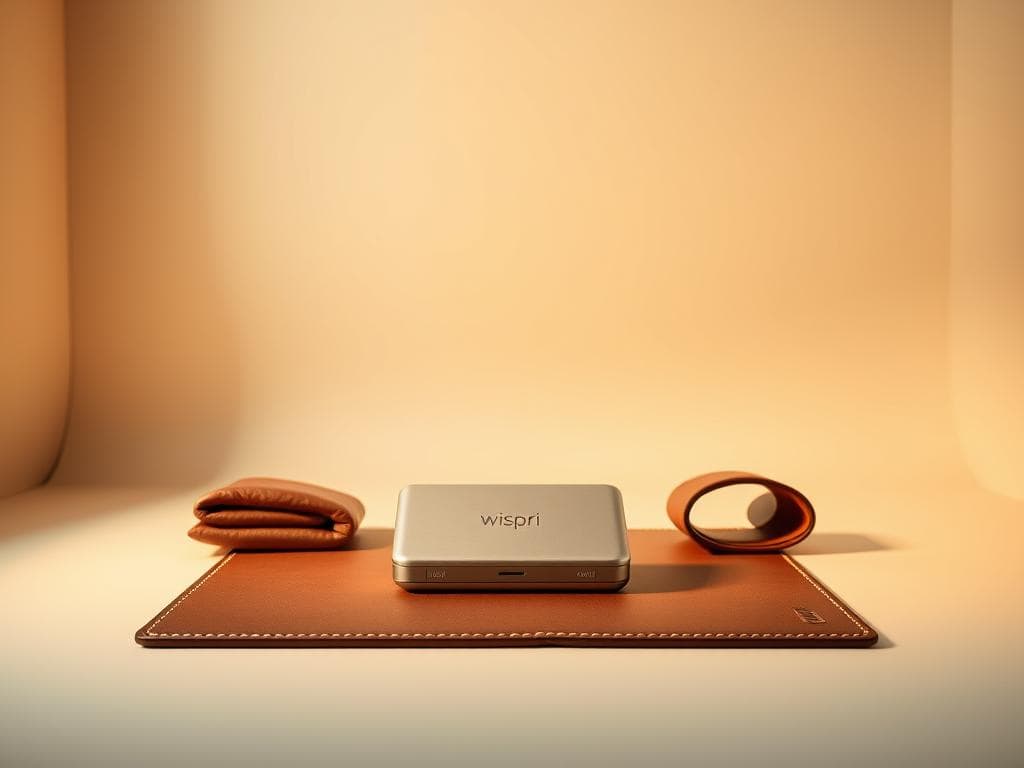Australians are known for being savvy shoppers, but sometimes the allure of a cheap product can be misleading.
Did you know that opting for the cheapest option can often lead to higher costs in the long run? This is because cheaper products may not be as durable or efficient, resulting in the need for frequent replacements or repairs.
When it comes to making a purchase, understanding the value behind the price is crucial. Tools like Wispri, Australia’s leading price tracking platform, can help consumers make informed decisions by monitoring product prices across multiple retailers.
Key Takeaways
- Understand the difference between price and value when making a purchase.
- Consider the long-term costs associated with cheaper products.
- Use price tracking tools to make informed purchasing decisions.
- Prioritise quality over price when it comes to essential or frequently used items.
- Be aware of the psychological factors that influence your purchasing decisions.
Understanding the True Cost of Products
Understanding the total cost of ownership is crucial for making informed purchasing decisions that balance quality and price. When evaluating a product, it’s not just about the initial price tag; it’s about considering all the costs associated with owning that product over its lifetime.
The Price Tag vs. Lifetime Cost
The initial price of a product is just the beginning. The true cost includes maintenance, repairs, and potential replacements. For instance, a cheaper product might seem like a good deal initially, but if it needs to be replaced frequently, it could end up costing more money in the long run. On the other hand, a more expensive, high-quality item might be more cost-effective over time.
Consider this: “How long do you plan on owning this item? The cost may seem high at first, but if you spread the cost out over the years you use it, the cost per year could actually be cheaper than repurchasing the item every year.”
| Product Type | Initial Cost | Lifetime Cost |
|---|---|---|
| Cheap Product | $10 | $30 (3 replacements) |
| Quality Product | $30 | $30 (one-time purchase) |
How Hidden Costs Add Up Over Time
Hidden costs, such as maintenance expenses and repair costs, can significantly add up over time. Cheaper products often require more frequent maintenance or replacement, leading to higher overall costs. In contrast, quality products, although initially more expensive, can offer better performance and reliability, reducing the need for frequent repairs or replacements.
By understanding the difference between the initial price and the total cost of a product, consumers can make more informed decisions. It’s essential to evaluate the quality of a product and consider how it will perform over its lifetime, ensuring that the chosen product provides the best value for money in the long run.

Cheap vs Quality: What’s Really at Stake?
The terms ‘cheap’ and ‘expensive’ are relative and can vary greatly depending on individual perspectives. What’s considered affordable for one person might be deemed pricey by another. This relativity is influenced by factors such as personal finances, product category, and individual priorities.
Defining “Cheap” and “Expensive” in Today’s Market
Defining these terms is not straightforward, as they are subjective and context-dependent. For instance, a dedicated denim enthusiast might view a $200 pair of jeans as a worthwhile investment, while others might see it as excessively pricey. The perception of value is closely tied to the product’s quality, brand reputation, and the shopping experience.
To better understand these concepts, let’s consider a few key points:
- The definition of “cheap” and “expensive” varies based on product category and personal priorities.
- Individual financial situations play a significant role in determining what is considered affordable or luxurious.
- Brand perception and the shopping experience can significantly influence our willingness to pay more for a product.

The Psychology Behind Our Purchasing Decisions
Our purchasing decisions are often influenced by psychological factors that can lead us to prioritize immediate savings over long-term value. Sales tactics and marketing strategies exploit these cognitive biases, making it challenging to evaluate the true quality of a product versus its price.
Several psychological factors come into play:
- The endowment effect, where we overvalue things we own.
- Loss aversion, which makes us fear loss more than we value gain.
- Hyperbolic discounting, where we prefer immediate rewards over future benefits.
Understanding these psychological factors can help consumers make more objective purchasing decisions based on actual needs rather than emotional impulses. By being aware of these influences, we can better navigate the complex landscape of quality versus price.
5 Key Factors That Determine When to Invest in Quality
Understanding when to prioritize quality over price involves examining several key considerations. Making informed purchasing decisions requires a nuanced approach, taking into account various factors that influence the value of quality investments.

Frequency of Use: Daily Items vs. Occasional Use
Items used daily, such as shoes and kitchen tools, should generally be of higher quality as they directly impact daily comfort and productivity. For instance, a quality pair of shoes can make a significant difference for someone who spends 8-12 hours on their feet.
Expected Lifespan: Short-Term vs. Long-Term Ownership
Evaluating the expected lifespan of products is crucial in determining whether short-term savings justify frequent replacements. Investing in quality items that last longer can be more cost-effective in the long run.
Impact on Your Time and Productivity
The impact on your time is often overlooked; cheap products that break down or perform poorly can waste valuable hours on maintenance, repairs, or inefficient use. For example, a low-quality appliance might require frequent repairs, costing you more in terms of time and money.
Safety and Health Considerations
For items related to safety or health, such as car tires or air purifiers, quality should almost always take precedence over price. The potential risks associated with low-quality products in these categories can have serious consequences.
Emotional Value and Satisfaction
Emotional satisfaction with quality purchases can improve overall wellbeing and reduce the stress associated with unreliable products. The “buy once, cry once” philosophy is a practical approach to purchasing decisions for important items, emphasizing the value of investing in quality to avoid future regrets.
By considering these five key factors, consumers can make more informed decisions about when to invest in quality. Whether it’s for daily use items, long-term ownership, or safety and health considerations, prioritizing quality can lead to greater satisfaction and reduced costs over time.
The False Economy of Cheap Products
The allure of cheap products often masks their true cost, leading to a false economy. When we prioritize low prices over quality, we may end up spending more in the long run.
The “Buy Cheap, Buy Twice” Phenomenon
The “buy cheap, buy twice” phenomenon is a common experience for many consumers. Purchasing low-quality items often results in multiple replacements, ultimately costing more than buying higher quality products initially. For instance, consider the case of cookware. A cheap pan might cost $20, but if it lasts only a year, you’ll end up buying multiple replacements. In contrast, a higher quality pan costing $60 might last five years, proving to be more cost-effective in the long run.
As one consumer noted, “So instead of paying $60 for a good quality one that would last 5 years, we’ve spent over $100 on low quality pans in the last 5 years, with only frustration and a graveyard of pans to show for it.” This anecdote highlights the pitfalls of prioritizing low prices over durability.
When Low Price Equals Low Value
Low-priced items often use inferior materials that deteriorate quickly, leading to performance issues and premature failure. This not only wastes money but also contributes to a disposable consumer culture with significant environmental impacts. In contrast, investing in higher quality products that last longer can be more sustainable.
“In most cases, the saying ‘you get what you pay for’ rings true. If you buy cheap products that don’t work, you are essentially wasting money.”
To avoid the false economy of cheap products, it’s essential to assess the total cost of ownership, considering factors beyond the initial price. By choosing higher quality products, consumers can save money in the long run and reduce their environmental footprint.
| Product Type | Low-Quality Cost | High-Quality Cost | Long-Term Savings |
|---|---|---|---|
| Cookware | $20/year | $60/5 years | $40 saved over 5 years |
| Clothing | $10/item | $50/item | Potential savings with fewer replacements |
Case Studies: Comparing Cheap vs Quality Products
Let’s dive into real-life examples that highlight the pros and cons of choosing between cheap and quality products. By examining different product categories, we can better understand when it’s worth investing in quality and when opting for cheaper alternatives might be sufficient.
Kitchen Essentials: The True Cost of Cookware
When it comes to kitchen essentials like cookware, the difference between cheap and quality products can be significant. A cheap frying pan might cost as little as $20, but it may not heat evenly and could have a short lifespan. On the other hand, a high-quality pan might cost $100 or more, but it will provide even heating, be more durable, and potentially last for decades.
| Feature | Cheap Cookware | Quality Cookware |
|---|---|---|
| Price | $20-$50 | $100-$300 |
| Durability | 1-2 years | 10+ years |
| Performance | Poor heat distribution | Even heating |
“There is a big difference in quality between a $30 knife set and a $300 knife set. One set makes food prep enjoyable and easy, the other makes it a chore.”
Clothing and Footwear: Price Per Wear Analysis
For clothing and footwear, the “price per wear” calculation can reveal the true cost-effectiveness of quality versus cheap products. For instance, a pair of well-made jeans might cost $200, but if worn daily for 5 years, the cost per wear is just $0.11 per day. In contrast, a cheaper pair costing $20 might only last a few months, resulting in a much higher cost per wear over time.
Electronics: When Paying More Actually Saves Money
In the realm of electronics, investing in quality products can often save money in the long run. High-quality devices tend to be more energy-efficient and have longer lifespans, reducing the need for frequent replacements. For example, a high-end smartphone might cost more upfront but could last longer and require fewer repairs than a budget model.
Furniture: The Long-Term Investment Perspective
Quality furniture represents a clear example of long-term investment value. A well-made sofa might cost $2,000, but if it lasts for 20 years, the cost per year is $100. In contrast, a cheaper sofa costing $500 might need to be replaced in 5 years, resulting in a higher cost over time.
In conclusion, while cheap products may offer short-term savings, investing in quality products can provide significant long-term benefits, both financially and in terms of user satisfaction.
How to Identify Quality Products Worth Their Price

Understanding what makes a product worth its price is essential for consumers looking to make smart buying decisions. When a well-known brand costs more, are you paying for quality or for the name? Sometimes we think ‘name brand’ and ‘high quality‘ are synonymous, but that is not always the case.
Research Techniques Beyond Price Comparison
To identify quality products, it’s crucial to look beyond simple price comparisons. Evaluating user reviews critically is a practical technique. This involves checking the overall rating, reading the comments for common praises or complaints, and verifying if the reviewers have actually used the product long-term.
Understanding Materials and Construction
Materials and construction quality are essential indicators of a product’s durability and performance. For instance, in clothing, the type of fabric and stitching can significantly affect the garment’s lifespan. In electronics, the build quality can influence how well the device withstands wear and tear.
The Role of Brand Reputation vs. Actual Quality
The relationship between brand reputation and actual quality is complex. While a reputable brand often signifies good quality, it’s not a rule. Some brands are known for their quality and customer service, offering certain guarantees that can enhance the overall value of the product.
By considering these factors and doing thorough research, consumers can make more informed decisions and enjoy the benefits of purchasing quality products that are worth their price. This approach not only ensures satisfaction with the purchase but also provides a better customer service experience in the long run.
Wispri: Smart Shopping for Quality Products at Better Prices
![]()
Wispri is revolutionizing the way Australians shop by providing a platform that tracks prices across multiple retailers. With Wispri, consumers can now make informed purchasing decisions and save money on quality products.
Price Tracking Across Australian Retailers
Wispri’s AI-powered platform monitors prices across major Australian retailers, including Amazon Australia, eBay, JB Hi-Fi, Harvey Norman, Officeworks, and Bunnings. This means that users can track their desired products and receive instant alerts when prices drop to their desired level, helping them save time and money.
Using Historical Price Data to Avoid Fake Sales
Wispri provides historical price data, enabling users to avoid fake sales and discounts by showing them the true price history of products. This feature helps consumers make informed decisions and avoid being misled by false discounts, ultimately saving them money in the long run.
Setting Price Alerts for Quality Items
By setting up customized price alerts for quality items, users can time their purchases perfectly and get the best value without constantly checking prices manually. This feature is particularly useful for consumers who are interested in purchasing high-quality products at the best possible price, allowing them to save money and make the most of their budget.
With Wispri, Australians can now bridge the gap between quality and affordability, purchasing higher-quality items at their best possible prices. By providing comprehensive price intelligence, Wispri helps level the playing field for consumers, enabling them to make informed purchasing decisions that align with their interests and budget.
Conclusion: Finding the Sweet Spot Between Price and Quality
By considering the factors discussed in this article, consumers can make more informed choices that balance price and quality. For daily-use items like a good pair of shoes, investing in quality often pays dividends in comfort and longevity.
Sometimes it’s okay to spend a little more to get a little more. If a quality piece is too expensive, consider saving by putting aside the money you would spend on a cheaper item. Tools like Wispri can help bridge the gap by allowing you to purchase quality items at their best possible price.
FAQ
What are the benefits of investing in higher quality products?
Investing in higher quality products can lead to a longer lifespan, reduced maintenance costs, and increased customer satisfaction. For instance, a pair of high-quality shoes may last longer and require less maintenance than a cheaper alternative.
How do I determine whether a product is worth its price?
To determine whether a product is worth its price, consider factors such as the materials used, construction, brand reputation, and expected lifespan. Researching the product and reading reviews can also help you make an informed decision.
What is the “Buy Cheap, Buy Twice” phenomenon, and how does it affect my wallet?
The “Buy Cheap, Buy Twice” phenomenon refers to the tendency to purchase cheap products that need to be replaced frequently, resulting in higher costs over time. This can lead to a false economy, where the initial cost savings are outweighed by the need for repeated purchases.
How can I save money in the long run by investing in quality products?
Investing in quality products can save you money in the long run by reducing the need for frequent replacements, maintenance, and repairs. For example, a high-quality kitchen essential may last longer and perform better than a cheaper alternative.
What role does brand reputation play in determining the quality of a product?
Brand reputation can be an indicator of a product’s quality, as reputable brands often invest in research and development to create high-quality products. However, it’s essential to look beyond brand reputation and consider factors such as materials, construction, and customer reviews.
How can I track prices across Australian retailers to find the best deals on quality products?
You can use tools like Wispri to track prices across Australian retailers, set price alerts, and access historical price data to make informed purchasing decisions.
What are some key factors to consider when evaluating the cost of a product?
When evaluating the cost of a product, consider factors such as the frequency of use, expected lifespan, impact on your time and productivity, safety and health considerations, and emotional value and satisfaction.

